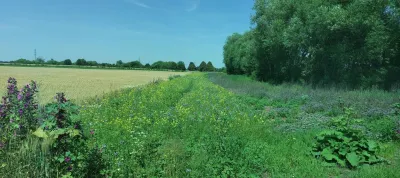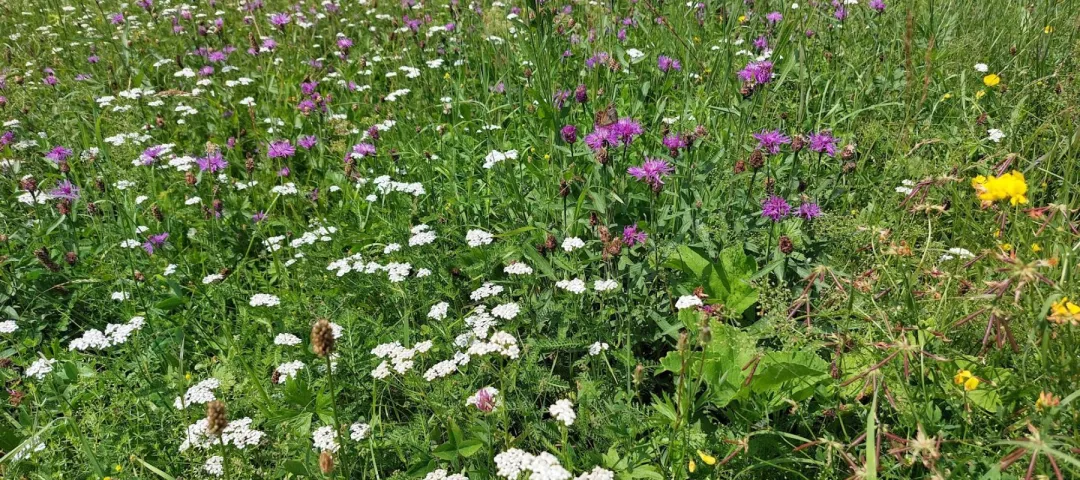General information
RDP Priority
- P4. Ecosystems management
RDP Focus Area
- 4A: Biodiversity restoration, preservation & enhancement
RDP Measure
- M07: Basic services & village renewal
Beneficiary type
- Public authority / body
Summary
The Austrian Council for Agricultural Engineering and Rural Development(ÖKL) initiated the project in order to observe the impacts of biodiversity areas and biodiversity networking implemented in the Austrian Agri-Environment-Programme (ÖPUL).
It cooperates with local farmers and an agricultural school in three model areas representing typical Austrian farm regions. Starting with monitoring indicator species, like wild bees and partridge, in 2022, the project aims to observe the effects of the implemented Agri-environment measures.
Results
- By sowing the flower strips in the municipality of Jaidhof in the southern Waldviertel (Krems-Land) district, north of Gföhl, a diverse range of plant populations was established, and two rare species were detected.
- In the southern Marchfeld (Gänserndorf) district, between 53% and 100% of the sown species germinated in the first year.

Promoter
Austrian Council for Agricultural Engineering and Rural Development (ÖKL)
Funding
Total budget 289 999.510 (EUR)
EAFRD: 144 999.755 (EUR)
National/Regional: 144 999.755 (EUR)
Ressourcen
Documents
Links
Context
ÖPUL verbindet is a rural development project in which farmers and biodiversity experts from three Austrian regions joined forces to implement biodiversity measures together in an agri-environmental programme (ÖPUL).
A condition for participating in the ÖPUL pprogramme's environmentally friendly and biodiversity-promoting management measure (UBB) is the creation of biodiversity areas on at least 7% of arable land and grassland. The ÖPUL verbindet project connects biodiversity areas to increase impact, establishing habitats across three pilot regions.
The three Austrian regions are Probstdorf in the southern Marchfeld area (associated with intensive arable farming); Jaidhof in the Waldviertel area (mainly arable and grassland); and the Höhere Bundeslehranstalt für Landwirtschaft (HBLA) Ursprung area in SSalzburg'sFlachgau region (grassland).
The project is managed by ÖKL, with support provided by the LACON landscape planning office.
This initiative started under the Austrian 2014-2020 Rural Development Programme and is now supported via the cooperation intervention of the Austrian 2023-2027 CAP Strategic Plan.
Objectives
The new phase of ÖPUL, which started in 2023, aims to counteract the progressive loss of biodiversity and climate change through environmentally friendly management of agricultural land. The project aims to show the positive ecological effects of biodiversity areas and connected habitats. It monitors the effects of the ÖPUL and raises awareness about the importance of biodiversity areas.
Activities
To achieve optimum benefits for biodiversity in the cultivated landscape, this initiative encouraged farms in the three participating regions to participate in measures that would connect individual actions at the farm level and embed them at the landscape scale. Farmers and biodiversity experts worked together to plan and create connecting habitats.
In addition to the creation of as many biodiversity areas as possible within the regions, the project also sought to incorporate newly created flowering areas and existing fallow fields into the habitat network.
Other important activities included establishing biodiversity as a positive topic among the farming community, as well as promoting networking and stakeholder involvement at regional level. During a series of social events – out in the field or in local pubs – farmers and biodiversity experts co-created local action plans and developed a joint narrative for biodiversity action.
Ongoing monitoring activities are carried out to evaluate the environmental impact of these biodiversity measures. Selected bird and insect species are indicators for assessing species and habitat diversity. The final results of the monitoring will be available at the end of the project.
Main results
In total, over 37 hectares (ha) of biodiversity areas were established across the three regions. Some of the management of fallow land and meadows has switched from cutting or shredding the vegetation to mowing.
Monitoring started in 2022. The first findings show that:
- In the municipality of Jaidhof, a diverse range of plant populations was established by sowing flower strips. In the first year, between 35% and 84% of the sown species germinated. The perennial species developed slowly in the first year and were initially less competitive. However, in the second year, 2024, they became much more established.
- In the same region, in 2023, only a few wild bees were caught, probably due to unfavourable weather conditions. Nevertheless, two rare species were detected: the Common Golden Furrow Bee (Halictus tumulorum) and the Asparagus Miner Bee (Lasioglossum sexnotatum).
- In Southern Marchfeld, in the first year, between 53% and 100% of the sown species germinated. Mixtures with many cultivated plants or annuals quickly offered a colourful and dense flower pattern, while mixtures with predominantly biennial and perennial plants showed slow development in the first year.
Key lessons
- The three regions cover a wide range of land use intensities in Austria, allowing the insights gained from the project and the effects achieved by the respective habitat networks to be implemented on a larger landscape scale beyond the pilot regions in the future.
- A key outcome of the bottom-up approach was that it encouraged a positive mindset amongst farmers and a practical approach to promoting biodiversity beyond the perceived obligations and restrictions. This positive impact of networking and stakeholder involvement at regional level for biodiversity is an important lesson from the project.
“The biodiversity areas with their different maintenance options are a valuable mosaic in the landscape. These structures create habitats for beneficial insects and contribute to maintaining diversity in our cultural landscape.”
Thomas Labuda

